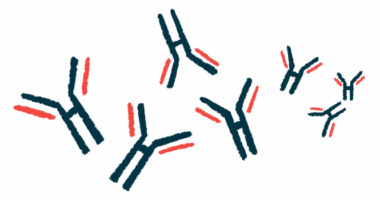Fabry mice produce missing enzyme with help of stem cell ‘cargo ship’
Modified mNAGA works just like GLA, may compensate for its absence

Researchers have used stem cells as a “cargo ship” to carry genetic information to produce an enzyme that mimics the activity of alpha-galactosidase A, the enzyme missing in Fabry disease, according to a proof-of-concept study in mice.
When injected into a mouse model of Fabry disease, this enzyme, called alpha-N-acetylgalactosaminidase (mNAGA), was active in the liver, but not in other organs such as the heart and kidneys.
“However, in the future, it may be possible to enhance the amount of secreted mNAGA through genome editing” or to “directly deliver mNAGA to organs and tissues,” the researchers said in a press release.
The study, “In Vivo Delivery of Therapeutic Molecules by Transplantation of Genome-Edited Induced Pluripotent Stem Cells,” was published in Cell Transplantation.
Fabry disease results from mutations in the GLA gene, which is responsible for producing the Gal A enzyme that’s crucial for breaking down fatty molecules, particularly globotriaosylceramide (Gb3 or Gl-3), into smaller components that cells can utilize.
One of the main treatments for Fabry is enzyme replacement therapy (ERT). This involves intravenously infusing recombinant human GLA every few weeks. Some patients can develop antibodies against GLA, hindering the therapy’s effectiveness.
Using iPSCs to restore GLA enzyme activity
To get around this, the researchers used induced pluripotent stem cells (iPSCs) from a healthy person to restore GLA’s activity. iPSCs can turn into almost any type of cell and are able to self-renew.
The researchers tweaked the cells’ genetic information to turn off the GLA gene and inserted genetic information for a modified version of another enzyme called mNAGA that works just like GLA and may compensate for its absence. This was done to avoid a possible immune reaction against the healthy GLA enzyme.
When Fabry cardiomyocytes (heart cells) and fibroblasts (cells of the connective tissue), which had no GLA activity, were grown together in the lab with mNAGA-secreting iPSCs, GLA activity in these cells was restored by 24.7% and 41.8%, respectively.
The researchers then developed an immunodeficient mouse model of Fabry disease. Immunodeficient mice lack a functional immune system, so human cells can be transplanted in them without risking rejection.
In these mice, “the GLA activity was lost in the liver, heart, kidney, and blood,” the researchers wrote. This was determined by checking the buildup of Gb3 and Lyso-Gb3.
The mice received injections of mNAGA-secreting cells directly into their testes. It took about seven to eight weeks for the cells to grow and form a tissue mass in the organs. This tissue mass retained its enzyme activity.
When the researchers measured enzyme activity, they observed no recovery in the heart, kidneys, or blood. However, enzyme activity in the liver was significantly improved. Moreover, there was no reduction of Gb3 and Lyso-Gb3 in the liver.
“One advantage of genetically modified iPSCs as a drug delivery system is [their] ability to provide therapeutic molecules directly to target organs and tissues by differentiating the cells into specific cell types,” the researchers wrote. “Taken together, these data indicate that although further optimization is required, we delivered mNAGA from transplanted iPSCs to the liver in vivo.”







